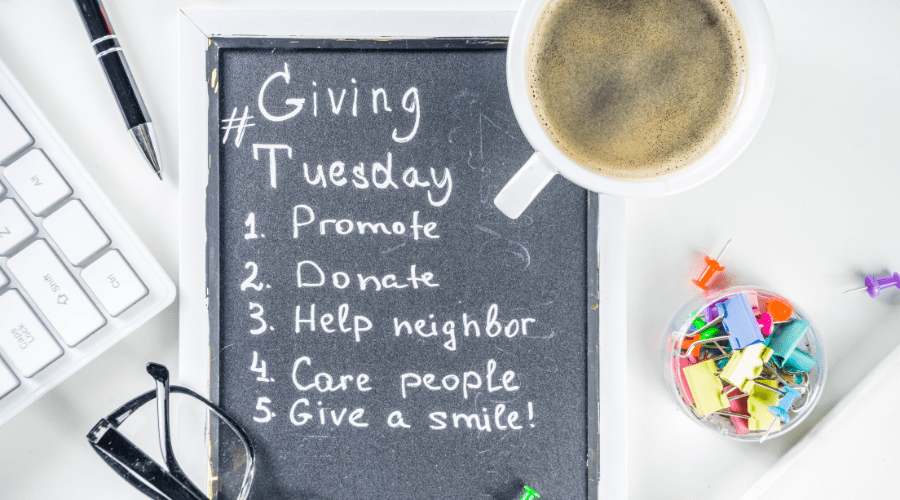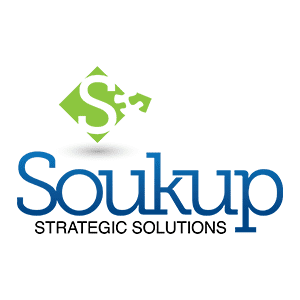Donors gave $3.1 billion in the US alone in just 24 hours on GivingTuesday last year. What does that mean for you? Well, if you haven’t participated in a GivingTuesday campaign before, your organization is missing out on one of the biggest opportunities of the year to secure donations. Keep in mind that almost every other nonprofit is likely to try and capitalize on such a prominent event as well, but that’s part of the movement’s beauty. So many great organizations and missions are being active in their communities to secure the means to expand their reach and help as many people as possible. Despite the positivity of it, you don’t want to fall behind other organizations when it comes to your campaign. So here is your playbook for making the best GivingTuesday campaign possible from the experts who have been doing it for years!
What is GivingTuesday?
Before you can create the best campaign possible, you should be familiar with the history of GivingTuesday in order to gain an understanding of the movement. According to the official website, GivingTuesday is a global generosity movement unleashing the power of radical generosity. It was created in 2012 as a simple idea: a day that encourages people to do good. Since then, it has grown into a year-round global movement that inspires hundreds of millions of people to give, collaborate, and celebrate generosity. Whether it’s making someone smile, helping a neighbor or stranger out, showing up for an issue or people we care about, or giving some of what we have to those who need our help, every act of generosity counts, and everyone has something to contribute toward building the better world we all want to live in.
This year, GivingTuesday will be held on November 28th and the organization that runs a campaign on that day will serve as an invaluable resource to anyone interested in getting involved. They have tips, examples, and tons of research on their website that anyone can utilize for free. Overall, it’s an amazing opportunity for any nonprofit to have their usual messaging amplified worldwide through social media, email communications, direct mail, phone campaigns, and even word of mouth.
Now that you have an understanding of the GivingTuesday movement, you’re ready for the tips that’ll make your campaign the best yet!
Join the movement
Take advantage and get involved with the amazing organization that started the movement! The GivingTuesday organization offers ways to use their platform and encourages cooperation between nonprofits to maximize the reach and impact of their campaigns. Here are some of this year’s topics and ideas for how to use them in your campaign. You’ll find more ideas and resources all throughout their website.
Find the full schedule of Giving Every Tuesday topics here which includes ideas for how givers can activate each week. Find the week that best fits the mission of your organization then create an activation.
Ideas:
- Organize a volunteer opportunity that relates to each week’s theme, particularly if your organization specializes in that cause area. What are some ways for potential new supporters to take action and get involved in moving the needle in your cause area? Are there virtual opportunities available?
- Social proof is a catalyst for conversions. Use #GivingEveryTuesday as a moment to mobilize your current supporters to help you build awareness for your mission. Ask them to post about how and why they contribute to your mission and challenge their followers to do the same.
- Collaborate with other nonprofits: Use your megaphone to share the work of colleagues who are working in one of the GivingEveryTuesday topic areas. Or work together to create a giving moment in your community based on a GivingEveryTuesday topic.
- Don’t forget to use #GivingEveryTuesday and #GivingTuesday when you post.
Set goals and align your staff
Before you kickstart a social media campaign or create a fundraiser, the first step in any campaign is to set goals. This will not only help you organize and prepare better, but it will allow you to assess the campaign while it is operating and after it is done in order to gain insight into what worked and what didn’t. This gives you the opportunity to improve and build upon each campaign until you find your recipe for success.
Remember that setting goals can be unproductive if mishandled. They shouldn’t be too lofty or ambitious, so evaluate the potential of your organization and choose the goals that fit your parameters. Avoid anything broad such as “increase donations.” Instead, add defining measurables like “increase donations by 15% during the week of GivingTuesday.” By adding performance indicators, you show the team exactly what needs to be done in order to achieve success and collect data that can be used in future campaigns.
You can have multiple goals that range over a variety of topics such as social media, fundraising, donations, and any other channel that connects your organization to your audience. Setting multiple goals can also help you organize and assign roles to your team based on the objectives. For larger nonprofits this may seem unimportant. The marketing team handles social media goals, the fundraising team handles fundraising goals and so on, but smaller organizations often have less staff. Keeping everyone focused on the proper task is much more important when there are less people to complete them. Make sure to catalogue your data before your campaign starts so you have a baseline of information to compare with the results of the campaign. For example, chart your current social media analytics, fundraising numbers, and email/newsletter statistics so that you can see how much you’ve grown in each category. This is essential for your reporting at the end of the campaign.
It’s also essential to define responsibilities in advance so that everyone can prepare and optimize every aspect of the campaign. Keep in mind that things never go exactly as planned, assign certain people in flexible positions so if anything goes wrong or requires management, you’re prepared. Building off that idea, keeping the entire team informed via group meetings is a great way to align everyone to their goals while informing them of every aspect of the campaign. This will synergize the efforts of your team so that despite all the moving pieces, everyone has a clear focus on the main objectives.
Engage your audience to generate support
In order to generate the best results possible, priming you donor base and audience ahead of time is an essential task. It can be as simple as a social media campaign that highlights what your organization does, or as complicated as a webinar to generate excitement. Above all else, you should distribute plenty of information explaining how and why they should share your messaging on GivingTuesday.
If you can show your base concrete examples of what their donation will accomplish, your chance of securing monetary assistance undoubtedly will increase. An example would be an organization providing food for the homeless making a series of social media posts that show some of the people they’ve helped with the text “a $10 donation can provide a full day of meals for someone living on the streets.” This incentivizes people because they can see the impact of their donation and gain a sense of accomplishment from the help their money provides others. This idea can be applied to any other channel as well. To build off the previous example, that same organization could circulate testimonies from those that have been helped with newsletters, articles on their websites, press releases, and any other format your organization utilizes.
Engaging the rest of your community (Board Members or Corporate Partners)
This step is a bit complicated because it looks completely different depending on your organization. While some nonprofits have an ample number of corporate or small business partners, many rely on their Board members for guidance and influence. Preferably, you’d be able to take advantage of both opportunities, but that isn’t always an option.
Getting your Board involved can make a huge difference to your campaign. If they have large audiences, their representation and support (on social media, newsletters, articles, or other channels) can provide your mission with influence and distinction. With one endorsement, you gain credibility with all the people in your Board member’s web of connections. It’s a safe bet that at least a few of the people in their network are wealthy potential donors and it only takes one act of extreme kindness to make a major financial impact for your nonprofit. At the very least, you’ll be taking advantage of another donor base and gaining visibility to your campaign.
The other opportunity is with corporate or business partners, and there are several ways to mobilize them so that both entities can succeed in their goals. The most obvious would be through a large donation from the company itself. It provides a massive financial boon for you and gives them the image of a company that cares about their community. While it’s a very helpful form of partnership, it might be even better to utilize their channels of communication and audiences. If they have a high-profile brand or extremely large mailing list, making use of this with some form of company endorsement towards your GivingTuesday movement can generate immediate financial assistance. It may even generate a large number of recurring donors that become attached to your nonprofit. This can result in support that continues for years to come as well as the growth of your mission.
Optimize your nonprofit for growth
With all the effort you’re putting into your GivingTuesday campaign, the last thing you want to deal with is a server overload on your website or a donation button that doesn’t work in your newsletter. This is a simple step but optimizing your nonprofit to handle the expected influx of engagement can save you from having any emergencies and allow you to generate the most growth possible. A thorough inspection and test of your website, all donation forms, and all donation links/buttons is a great way to avoid missing out on any donors during your campaign. Its understandable that with the increase in work due to GivingTuesday, some organizations can’t properly handle all the various outputs needed to generate successful results. This is where Donor Management Software (DMS) can save the day. While many of these services cost money, the returns you stand to gain are almost incomparable if you already have a steady stream of revenue for your nonprofit. Some of the highest rated options available now are DonorPerfect and Bloomerang.
Say “Thank You”
One of the most important steps that’s usually the conclusion of any fundraising campaign is to show your appreciation to the people who donate to your nonprofit. The gratitude you show is the best way to ensure that new donors acquired from your GivingTuesday campaign will not only be back again next year, but also stay active with your organization in general going forward. You can send your appreciation through the multiple channels utilized in your campaign and address donors, staff, partners, and Board members who helped make your campaign so great. You can also make it another opportunity by welcoming new members and asking for feedback so that next year goes even better!
Review the results, analyze your data, report the findings
The last step is the most important and hopefully going to be the best. This is where you look at all of the hard work, compassion, and support that everyone put into the campaign. Using the goals and measurable objectives you created at the start of your campaign, analyze the outcomes to see if you were successful in your efforts. Comparing the baseline information you took before the campaign with the data you’ve taken after it will be required to measure the success of your campaign and help dictate what changes/ improvements need to be made in the future.
So far, you’ve learned that to have the best campaign possible, you need to join the GivingTuesday movement, set goals, engage your audience and partners, optimize your nonprofit, thank everyone involved, and finally review your results.
These seven steps can become a massive undertaking when you break them down and try to achieve success in your campaign. Another option for a potentially understaffed organization is to hire a consulting agency to do some of the heavy lifting for the campaign. A consulting agency can essentially do all the work on any fundraising campaign so that your organization doesn’t have to. Soukup Strategic Solutions specializes in marketing services, fundraising campaigns, grant proposal writing, strategic planning, Board development, and coaching for nonprofit professionals. Hiring a consulting agency can save your organization from drowning in work and can provide an amazing return due to the expertise of a company that specializes in supporting nonprofits. Good luck with your GivingTuesday campaign, and let us know if we can help you make an impact in your communities.
(GivingTuesday statistics sourced from the GivingTuesday 2022 Impact Report )





